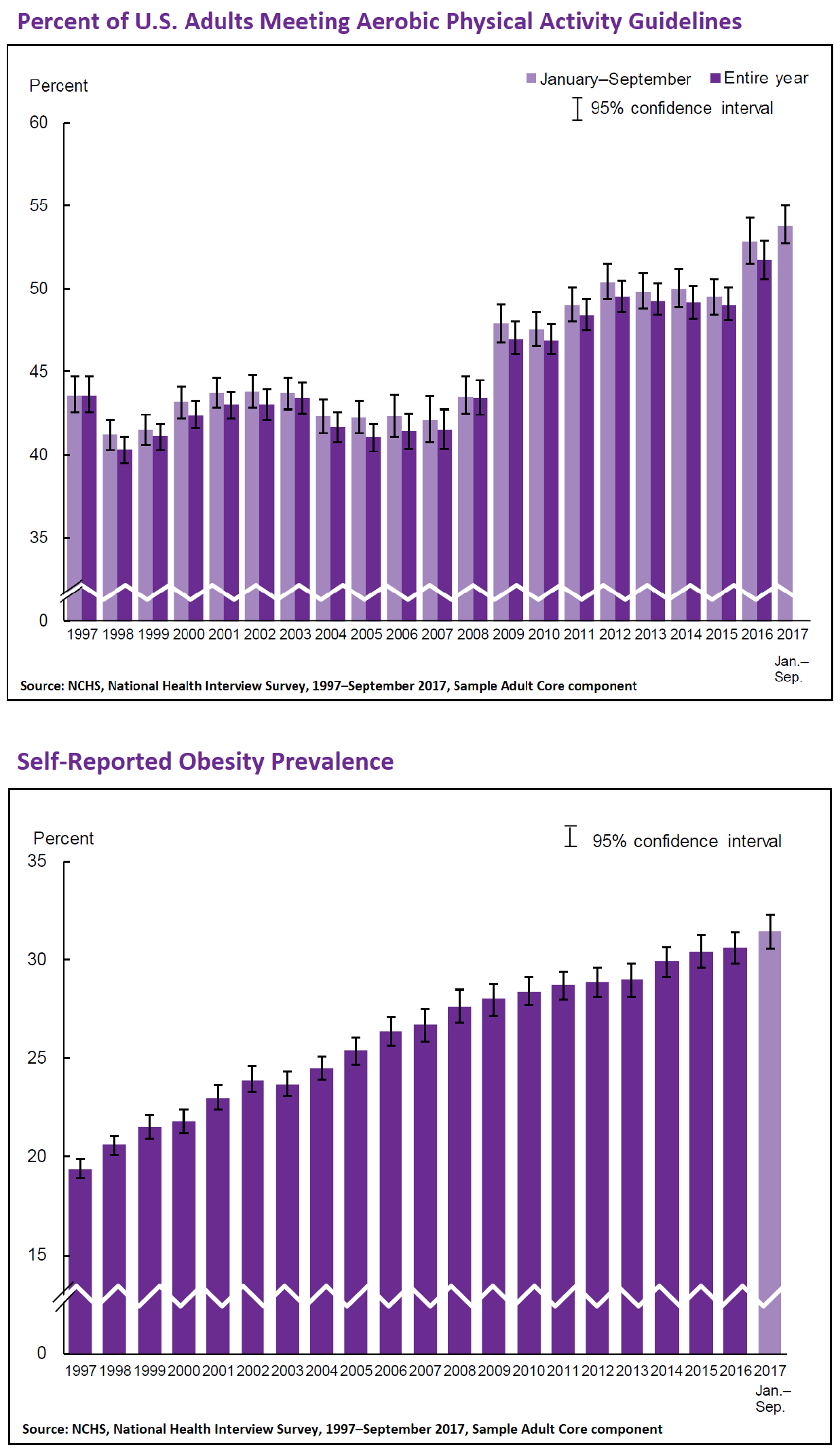
Is Popular Fitness Culture Preventing Obesity?
 Perhaps you’ve noticed. Popular culture has embraced fitness. Athleisure is everywhere in fashion. Gyms are enjoying a prolonged trend of seemingly limitless membership growth. The National Center for Health Statistics reports that the number or people who say they are meeting guidelines for physical activity is growing. But is our popular fitness culture putting a dent in obesity trends?
Perhaps you’ve noticed. Popular culture has embraced fitness. Athleisure is everywhere in fashion. Gyms are enjoying a prolonged trend of seemingly limitless membership growth. The National Center for Health Statistics reports that the number or people who say they are meeting guidelines for physical activity is growing. But is our popular fitness culture putting a dent in obesity trends?
No Obvious Effect on Obesity Rates
In the new report from the National Center for Health Statistics, we learn physical activity and obesity rates are moving up in parallel. Of course these are self-reports. People always exercise a little more and weigh a little less when they’re telling the story. But still, these numbers give a good idea of trends, even if the absolute numbers might be a bit off.
About half of all adults report leisure time exercise that meets or exceeds guidelines for good health. The numbers have climbed steadily since 2008.
And meanwhile, obesity rates just keep on climbing. These self reports put the prevalence at 31%. When researchers actually weigh and measure people, the number is closer to 39%. But either way, the number is growing.
Routine Physical Activity
It’s worth remembering that routine physical activity matters, too. And in fact, Tim Church and Corby Martin recently reminded us that it might be more important for explaining obesity trends. The real deficit in physical activity is movement at work and school. Between trips to the gym, Americans have been getting more and more sedentary.
A Reminder That You Can’t Outrun a Bad Diet
Physical activity is definitely important. Aerobic physical activity is great for health in many ways. Exercise to build strength helps, too. But diet matters. Exercise will not eliminate the effects of an unhealthy diet.
Let’s Move! is a good prescription for health. But it’s not putting a dent in obesity rates.
Click here for the report from NCHS and here for more from Quartz.
Athleta, photograph © Maurer Foundation / flickr
Subscribe by email to follow the accumulating evidence and observations that shape our view of health, obesity, and policy.
March 16, 2018

March 16, 2018 at 9:27 am, Chester Draws said:
Is obesity rising, or is BMI?
Because if I go to the gym I lose fat, but put on weight.
Many professional rugby players are “obese” by the stupid measure we use to calculate obesity.
March 16, 2018 at 11:30 am, Ted said:
Good questions, Chester. As you think about the answers, it’s important to separate epidemiology from clinical diagnosis. To come up with estimates of how much obesity is in the population, you can’t do much better than BMI. But to diagnose obesity in an individual, BMI has limitations.
March 16, 2018 at 3:50 pm, John Dixon said:
Actually BMI is an excellent measure of body fatness for the vast majority of our populations. The rugby players and body builders are the outliers.
One of the great myths of Obesity is the apparent weakness of BMI.
If you know a persons age, sex and BMI you can predict almost 90% of variance in percentage body fat.
BMI is a great measure of fatness but it tells us nothing about where it is stored.
March 17, 2018 at 3:52 am, Ted said:
Well said. Thanks, John!
March 27, 2018 at 4:07 am, Professor Nilsson said:
There is nothing that says that the rising numbers of physically active persons are the same as ones with obesity, no association just trends. Maybe, to speculate a bit, the gap is just increased, more people either exercise or eat more….